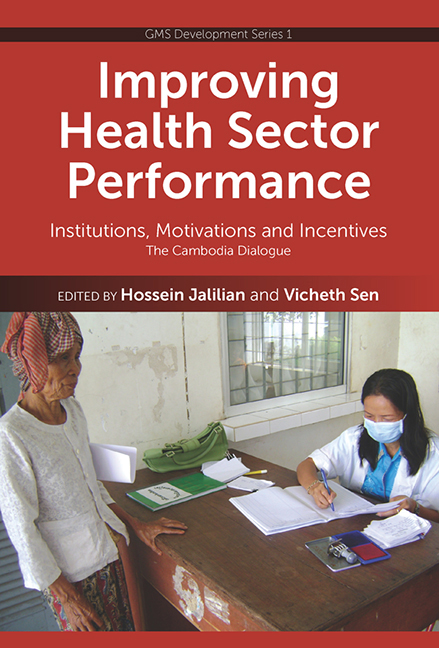 Improving Health Sector Performance
Improving Health Sector Performance from Part I - Overview
Published online by Cambridge University Press: 21 October 2015
KEY MESSAGES
Improving access to primary health care is important for prevention, early detection, and management of health conditions and also contributes to more efficient utilization of resources in a health system. However, workforce shortages and high staff turnover rates can be a major barrier to the access to quality primary health care.
Health systems in Asian and Pacific countries are dominated by urban-based tertiary care facilities that are considered by consumers to offer superior quality services, and by health practitioners to represent higher status employment.
Experiences in both developed and developing countries suggest that personal factors (such as place of origin and location of training) are important for health workforce recruitment, but workforce retention strategies need to pay attention to professional factors.
Individual financial and non-financial incentives can be effective in improving the deployment of health workers in primary health care in rural settings, and could be promising for urban primary health care, but these incentives need to be used in combination within the context of the local environment so that incentives specifically target individual and location-specific requirements.
Financial incentives for individuals tend to be more effective for recruitment than retention. Organizational incentives to improve the work environment and give better professional support to individual health workers are more important for workforce retention.
A strategy that seeks to combine the skill bases of highly trained health professionals, lower skilled health workers, and the informal sector (including regulating traditional healers) can improve access to primary health care and, in doing so, may assist with workforce retention as well. Creating a workforce with adequate interest in and commitment to primary health care requires strategies to realign the curriculum and training locations of educational institutions.
Ultimately, the status of primary health care within a health system will be important in attracting and retaining high-quality health workers. Adopting a system where primary health care is the first point of contact and referral, including for financing purposes (that is, a “primary health care as gatekeeper” system) is likely to be effective in this regard.
Overall, individual, organizational, and system incentives should be applied. But workforce issues should be addressed concurrently with other building blocks of the health system.
To save this book to your Kindle, first ensure no-reply@cambridge.org is added to your Approved Personal Document E-mail List under your Personal Document Settings on the Manage Your Content and Devices page of your Amazon account. Then enter the ‘name’ part of your Kindle email address below. Find out more about saving to your Kindle.
Note you can select to save to either the @free.kindle.com or @kindle.com variations. ‘@free.kindle.com’ emails are free but can only be saved to your device when it is connected to wi-fi. ‘@kindle.com’ emails can be delivered even when you are not connected to wi-fi, but note that service fees apply.
Find out more about the Kindle Personal Document Service.
To save content items to your account, please confirm that you agree to abide by our usage policies. If this is the first time you use this feature, you will be asked to authorise Cambridge Core to connect with your account. Find out more about saving content to Dropbox.
To save content items to your account, please confirm that you agree to abide by our usage policies. If this is the first time you use this feature, you will be asked to authorise Cambridge Core to connect with your account. Find out more about saving content to Google Drive.